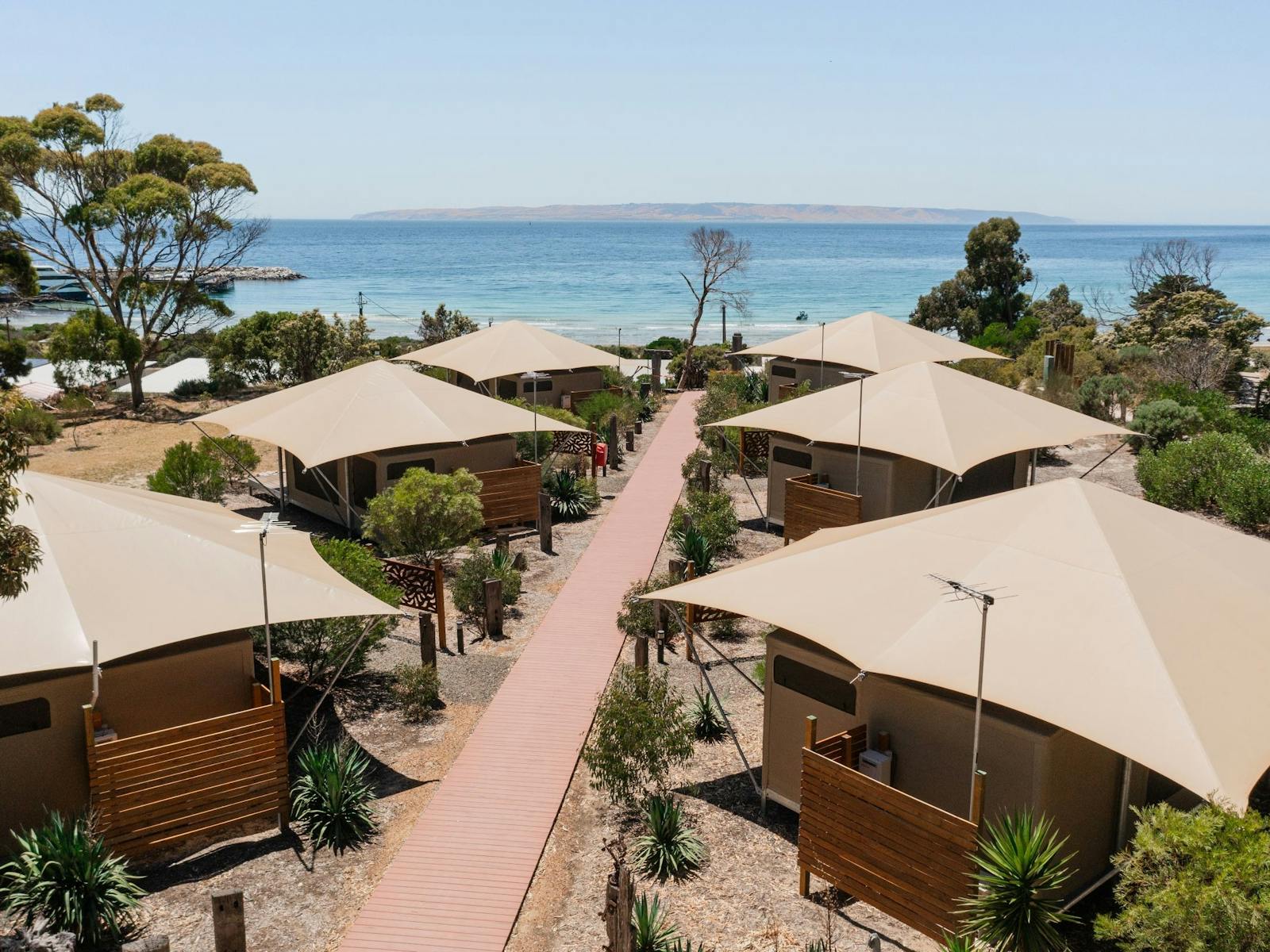Seal Bay
Seal Bay on Kangaroo Island is the world's only dedicated research facility for Australian sea lions. Visitors can support conservation efforts and gain insights into the fascinating world of these creatures by exploring the sanctuary.
Seal Bay offers a unique and immersive experience, as there are no enclosures or cages to separate visitors from the sea lions. Guided tours take you directly into the heart of the colony, where experienced guides provide expert insights into the fascinating lives of these endangered animals. Witness firsthand how they hunt, surf, interact with their pups, and defend their territory, an opportunity unmatched anywhere else in the world.
The Australian sea lion population, currently numbering less than 12,000, is facing a critical decline. Factors such as pollution, parasites, and climate change may be contributing to their dwindling numbers, but the exact causes remain unclear. To safeguard this endemic species, biologists must prioritise research to understand and address these threats.
This research on Australian sea lions, including population dynamics, breeding patterns, health, and behavior, is ongoing.
For over two decades, the Department of Environment, Water, and Natural Resources (DEWNR) has collaborated with government agencies like the South Australian Research and Development Institute (SARDI), Australian universities, and the Nature Foundation. This partnership has focused on monitoring the Australian sea lion population at Seal Bay and investigating the reasons behind its decline. This collaborative effort provides crucial data on the health of the Seal Bay sea lion population and informs broader park management strategies to ensure its sustainability as a popular tourist destination.
In recent times, there have been extensive, environmentally sensitive upgrades to the Seal Bay infrastructure, including the boardwalks and visitor centre. The introduction of the Southern Kangaroo Island Marine Park protects the sea lion feeding environment from overfishing. Sanctuary zones keep them safe from entanglement in nets or from colliding with boats.
Get involved
Seal Bay attracts approximately 100,000 visitors each year, generating revenue that directly supports national parks and wildlife conservation initiatives through the Department of Environment and Water.
Visitors to Seal Bay can gain a deeper understanding of these sea lions by observing them in their natural habitat. The sanctuary offers self-guided tours along wheelchair-accessible boardwalks and viewing platforms, ensuring minimal disruption to the delicate ecosystem.
For a more immersive experience, guided beach tours are available, including a new 2-hour research tour launched in 2019. Led by experienced guides, these tours provide insights into sea lion behavior, research methods like microchipping, and the opportunity to contribute valuable data to the South Australian Research and Development Institute (SARDI). Tours operate at sunrise and sunset, and donations contribute directly to the Australian sea lion research fund.

Eco tourism
Seal Bay's ecotourism practices prioritise educating visitors about the critical importance of conserving endangered Australian sea lions and fostering a deeper appreciation for the environment. By adopting sustainable business and interpretive methods, the sanctuary aims to inspire individuals to become active stewards of the Australian sea lion population for generations to come.
In 2017, Seal Bay earned Advanced ECO Certification from Ecotourism Australia, the highest certification within the industry. This affirms the sanctuary's dedication to environmental conservation and its ability to offer exceptional and sustainable tourism experiences that educate visitors about the importance of protecting the island's natural surroundings.














